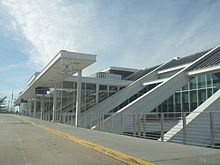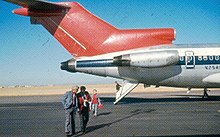
Quick Facts

Biography
Frederick William Hahneman (July 5, 1922 - December 17, 1991) was a Honduras-born US citizen convicted of hijacking Eastern Airlines Flight 175 from Allentown, Pennsylvania to Miami, Florida, on May 5, 1972. Hahneman parachuted from the plane over his native Honduras after extorting $303,000 from Eastern Airlines. Evading a manhunt by the FBI and Honduran police and with a $25,000 bounty on his head, Hahneman went on the run for 28 days before finally surrendering to the US Embassy in Tegucigalpa. He was sentenced to life imprisonment for aircraft hijacking, kidnapping and extortion, serving 12 years. Speculation still surrounds Hahneman's motives for the crime.
Background
Hahneman was born in Puerto Castilla, Honduras, to a Honduran mother, Delia Pastore Ordóñez, and an American father, the late William Frederick Hahneman, of San Francisco. It is not known when he was naturalized but he had lived in Easton, Pennsylvania, since 1960. He was an engineer and married to Mary Jane Hahneman. They had two sons. Neighbours of the couple told investigators later that Hahneman was a "mystery" to them and that Mary, going blind, raised the children alone.
Historical context
The period 1967-1972 saw a spate of aircraft hijackings in the United States and worldwide. There had been 26 attempted hijackings in 1971 alone, 11 of them successful. So common were they that the May 8 Evening Chronicle editorial of 1972 stated, "They often command little more than one-column, six-paragraph stories on page 8 of most daily newspapers."
The hijackings were a mixture of terrorism and crime for profit. The most infamous of these hijackings is arguably that of D. B. Cooper, which occurred just six months prior to Hahneman boarding Flight 175.
The hijacking
On May 2, 1972 Hahneman checked into the Americus hotel in Allentown as a well dressed businessman under the assumed name George Ames. Staff remembered him as "polite" but got the impression that Ames had "put up a wall around himself". After asking directions to a travel agent, staff later reported Ames saying he was "going to take a plane" later that morning.

On the morning of May 5 at Lehigh Valley International Airport (known at the time as Allentown–Bethlehem–Easton International Airport), Hahneman managed to board Eastern Airlines Flight 175, a Boeing 727 jet, armed with a handgun. Shortly after take-off, Hahneman threatened the crew and informed the pilot, Captain W.L. Hendershott, that he was taking over the plane and wanted $303,000 from the airline.
While the captain informed the 48 passengers that "there is an armed man aboard", Hahneman held the chief stewardess hostage at the rear of the plane. One of the passengers, New York Times reporter Neil Amdur, wrote later, "From the moment the captain uttered those chilling words...I felt a sense of fear I had never known."
The captain would later tell FBI investigators that Hahneman "talked like there was another country and he wanted the money for a cause."
Two other passengers, Frank Valek, a safety inspector for Western Electric, and Robert Palazzo, the mayor of Columbia, N.J., both found Hahneman's gun pressed into their stomachs as they went to the rest room and magazine rack, respectively. Other passengers prayed.
Flight 175 was scheduled to land at Washington's National Airport but Hahneman ordered the captain to land at Dulles International Airport. He did so at 11:15am. No passengers were allowed to leave the plane while Eastern Airlines worked to meet Hahneman's demands. These were $303,000 in cash, six parachutes, two bush knives, two jump suits, two crash helmets, fuel, food and two cartons of his favourite Benson and Hedges cigarettes.
Satisfied that his demands had been met, at 1:13pm Hahneman allowed the passengers to disembark one by one, including one stewardess. The rest of the 6 crew he kept hostage and ordered the captain to take off again at 1:50pm. Soon after becoming airborne Hahneman decided he didn't like the $100 bill denominations given to him by Eastern. He ordered the plane to return to Dulles and demanded the money in larger bills. It took Eastern four hours to comply with this difficult demand, with some of the bills being flown in from Miami.

Satisfied once again, Hahneman ordered the captain to take off and fly to the Central American republic of Honduras, his country of birth. However, en route the plane's hydraulic pump developed a problem and the captain told Hahneman they had to divert to New Orleans. Hahneman was angry and when they landed in New Orleans he demanded another plane from Eastern. When it was ready he put a noose around Captain Hendershott's neck and forced the crew out at gunpoint, using them as a human shield to get safely onto the new plane.
The remainder of Flight 175 passed without incident and on May 6, around 4am, over the pitch dark Honduran jungle, Hahneman ordered the captain to slow the plane's airspeed. He put on one of the parachutes he'd demanded and opened the rear door. Clutching his money-filled attache case, Frederick Hahneman jumped from the aft airstair into the dense undergrowth below, and disappeared.
Manhunt
In the US the story faded from the news but in Honduras Hahneman was on the run from the FBI and the Honduran police. He moved around between friends and family, trying to stay one step ahead. Eastern Airlines put up a $25,000 reward for his capture leading to a tip off that Hahneman was still in Honduras. With his picture now everywhere in Honduras and exposure close, Hahneman sought refuge with his old friend and fellow engineer, José Gómez Rovelo.
On June 1, Acting FBI Director L. Patrick Gray III obtained a warrant in the US District Court of Alexandria, Va., for Hahneman's arrest. The FBI had put together biographical information Hahneman had let slip to the crew during their 20-hour ordeal, with a photograph they possessed, to identify Hahneman as their prime suspect. They said Hahneman's movements in rural Honduras had been tracked by the Honduran police.
With the net closing, Rovelo convinced Hahneman that he was too old to be on the run. Hahneman agreed. At 1am on June 2, Hahneman and Rovelo walked into the US embassy in Tegucigalpa and Hahneman surrendered.
Aftermath
Hahneman was in custody but the money was not. He told authorities that he had deposited the ransom in "the Chinese Communist Bank in Hong Kong", via a mysterious Panamanian "contact".
On September 11, 1972, Hahneman waived his right to a jury trial and plead guilty to a charge of air piracy, kidnapping and extortion. He was sentenced to life imprisonment on September 29, 1972 in the US District Court in Alexandria, Va, and sent to the federal prison in Atlanta.
As he left the federal building for prison, Hahneman was asked by a reporter what he'd done with the money. "None of your bloody business," he replied.
On May 8, 1973 the FBI announced they had recovered the $303,000 ransom. In the press release they said, "Upon recovery of the money a check was made of the National Crime Information Center, FBI Headquarters, Washington D.C., which determined the serial numbers tallied with the ransom money paid in connection with the hijacking." They provided no further details of how or where they recovered the money.
Bureau of Prisons records show Frederick Hahneman was paroled on March 13, 1984. On August 17, 1984 he was discharged. The Bureau has no further records of him.
Speculation about motives
Hahneman's arrest reignited interest in the case and his quiet Easton neighbourhood was alive with agents and reporters asking questions. His blind wife and his sons' lives were spread across the local press. Fed by the FBI's reluctance to reveal details of how and where they recovered the money, along with Hahneman's political claims while in custody and the statement from the captain, there was much speculation about Hahneman's frequent foreign trips, rumours that he'd deposited the $303,000 in a communist bank, and claims that Hahneman and his cousin Roberto Martínez Ordóñez, a delegate with the Honduran mission to the United Nations, were plotting a revolution in Honduras.
Mary Hahneman maintained that she had no contact with her husband and didn't even know he'd been released. Asked after his 1984 discharge, she said, "I still don't know why he did it. If you ever find out, will you please tell me?"

 Cancer
Cancer